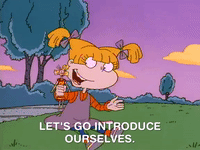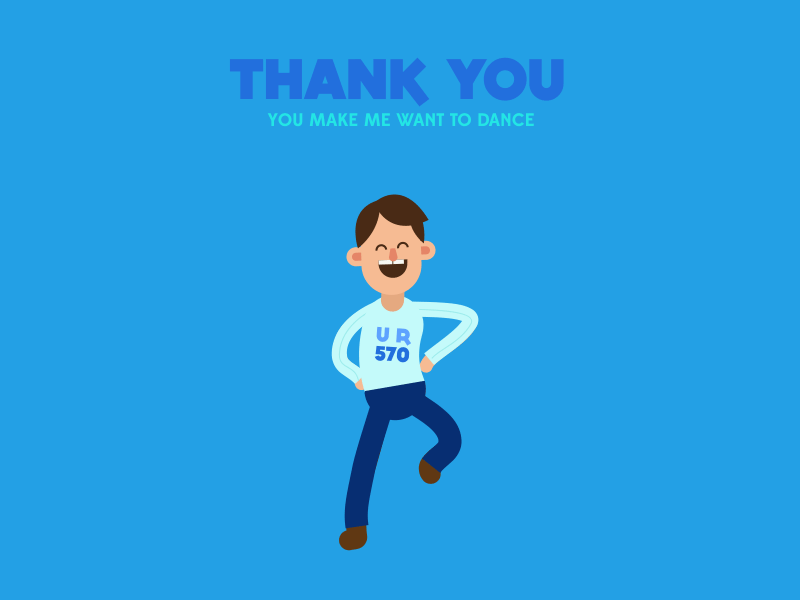Table of Content
- How to Introduce Yourself in an Email
- When is it Appropriate to Introduce Yourself?
- How to Introduce Yourself in an Email
- How to Introduce Yourself in an Email: 5 Great Examples
- Final View
How to Introduce Yourself in an Email
Meeting someone in person is relatively simple. You give them a friendly grin, shake their hand, and introduce yourself. But what if you aren't meeting in person? What if you're sending an email introduction?
Maybe you're trying to make a new connection, or maybe you're looking for advise, a collaboration, or a job. How can you stand out among the 700 other emails in their inbox and persuade them that responding to you is worthwhile?

When there's so much pressure to get the phrasing precisely perfect, writing an opening email can be nerve-wracking.
Regardless of the reason for your email, you'll almost certainly be competing for attention with a slew of other messages, especially if you're a first-time correspondent.
Although writing an initial email may appear simple, it may be awkward and even nerve-wracking to ensure you say the correct thing and attract attention in the appropriate manner.
When is it Appropriate to Introduce Yourself
Before we go into the details of how to write an introductory email, let's define what an introduction email is?
The word is self-explanatory and refers to emails sent to introduce oneself to someone they have never met before.

In most cases, email introductions have a specific objective in mind. An email introduction is a great place to start if you're wanting to start a business relationship, open a discussion with a possible employer, or make industry contacts for the future.
In other words, an introduction email is a method to say hello; it's a kind of semi-formal salutation to someone you don't know but wish to get to know.
You might be wondering why an introductory email is so crucial that we've decided to devote a whole post to it at this stage.
How to Introduce Yourself in an Email Example
The following are the most significant guidelines to consider while drafting an email introduction:
1. Make Your Subject Line Extremely Attractive
You want your recipient to open your email as soon as you send it to promote yourself. Even if it doesn't, your receiver will probably not want to open it if it's a disappointment.
When designing a subject line, it's important to keep it succinct. Because the subject line is often truncated, especially on mobile phones, you should aim for a subject line of less than 30 characters.
If you have an acquaintance in common with the person, mention it, or make a suggestion. Examples of introduction subject lines include the following:
- A note from the new [Job Title]
- A quick ‘hello’ from the new [Job Title]
- ‘Hello’ from [Name], the new [Job Title]
2. Personalize your Greeting
Because your goal is to connect with a specific person, you want your greeting to be specific. Always address them by their given name. Make sure it's spelled correctly and refrain from using nicknames.

You can use "Dear" in professional contexts such as applying for a job or writing to someone in a higher position. For more casual situations, such as contacting a friend of a friend or someone in a less formal industry, starting with "Hello" or "Hi" is appropriate.
Never use phrases such as "To Whom It May Concern" or "Dear Sir or Madam."
3. Introduce Yourself
It's time for you to introduce yourself! Be clear and concise about who you are, and include details that will be useful to the recipient.
For example, the hiring manager for that content strategy job you're applying for isn't interested in the fact that you're a crazy cat lady. It would, however, be pertinent to a fellow cat blogger you'd like to interview for your podcast.
Example:
My name is Elsa, and I work as ABC, Inc.'s Senior Director of Product Marketing.
My name is Elsa, and I'm in charge of organising our ABC TV event in November.
My name is Elsa, and I work in the marketing department at ABC, Inc. as a fellow Penn State University alumna.
4. Explain Why you are Reaching Out
After you've gotten the introductions out of the way, get to the point of the email. Tell them how you obtained their contact information and why you're contacting them. You should use as few words as possible to explain these issues.
Make your explanation as relevant as possible to the reader. You want your reader to feel as if you're reaching out to them and them alone, rather than as if they're a part of a massive effort, even if they are.
5. The Ask
Explain why you are emailing the recipient in a concise manner. Make your request clear, but don't come across as too demanding. This should be a short and to-the-point call to action.
The more they can see what's in it for them, the more likely you'll get what you want. If your request is too large, too desperate, or too perplexing, you may not receive a response at all.
6. Write a Professional Closing
There is no need to write anything else. The best emails are brief, to-the-point, and to-the-point. After all, extra information or unnecessary details reduce the likelihood that your recipient will read the email because they will be put off by its length. You also run the risk of diverting their attention away from what is truly important.

With that in mind, say "thank you," "thank you so much," or "thank you so much" (depending on the size of your request), and include your name. Looking for more ways to sign off? Try one of these effective email closing lines to pique your recipients' interest and elicit responses.
How to Introduce Yourself in an Email: 5 Great Examples
Now that you have all of the building blocks, let's see how each section works together to form a complete introduction email.
1. How to Introduce Yourself as a Personal Referral
Hello Elsa,
I'm inspired by your work in customer success, as well as your unusual career path.
I was inspired to contact you after reading your recent article on managing surges in support tickets. I've assisted companies like yours in easily managing accelerated support tickets, which has contributed to up to 40% growth in as little as three months – this case study demonstrates how.
I'd be interested in sharing more with you if you're interested in learning how to implement some of these strategies in your team. I've included a link to my calendar [insert link].
Your Sincerely,
Sweety
This is a perfect example of how to introduce yourself in an email as a Personal referral.
2. How to Introduce Yourself to a Group
Maybe you've recently started a new job or joined a new team and need to introduce yourself to a group of people. Create your email introduction using this template.
Hi All
I'm the new enterprise sales team's new sales director. I wanted to take a moment to officially greet you.
The work you've done and the numbers you've achieved have been critical components of our successful year. And I'm looking forward to working with you more closely in the coming months.
I'll be reaching out to everyone in the coming weeks so that I can meet you all and say hello. If you have any questions or concerns during this time, please do not hesitate to contact me directly; my door is always open.
I'm looking forward to collaborating with you all.
Thank You,
Sweety
3. How to Introduce Someone through Email
If you have a contact who would benefit from connecting with a friend or colleague of yours, send them an email using this template to introduce them. Include justification for the introduction and ensure that the connection will be beneficial to both parties.
Hi Elsa
Please welcome Katherin, a manager on our high-performing mid-market sales team. He previously managed sales operations at a technology startup, [Company Name], and is knowledgeable about new sales operations technology. He's curious about our sales operations and would like to learn more.
Elena is a senior manager on the sales operations team, and she is currently reviewing the tools and software that the team will be using in the coming year.
I've copied Elsa on this email so you can talk about sales operations and technology — and I'll leave it at that.
Best,
Caroline
4. How to Introduce Yourself to an Executive
It's difficult to get a response from a CEO or executive. However, your introduction can make or break the situation. When writing your email, keep the following points in mind.
To begin, make your request gentle and advice-driven. Executives are usually good with people and enjoy assisting others. Instead of a request to sell, start your email with a request for information or advice.
Another excellent suggestion is to compose your email to them on your phone. Executives are always on the go and frequently check their emails. Compose your email while on the phone to ensure that they have a positive reader experience.
Also, don't forget to use your email signature.
Hello Olivia
I noticed you recently unveiled a gleaming new BlueHouse Designs rebrand. Congratulations on a job well done!
My name is Emma, and I'd like to learn more about what motivates executive teams to decide it's time to rebrand. Would you be available for a 15-minute phone call to discuss your decision to rebrand?
Regards,
Emma
5. How to Introduce Yourself to a Recruiter
Sure, you may spend hours perfecting your resume and cover letter for a job, but do you pay attention to the submission email before hitting send?
When recruiters are sifting through applications, you want to make your application stand out. The first step is to send a well-thought-out introduction email. Write a friendly and professional "Hello" note instead of a novel.
In the example below, I explain why I'm sending the email, share no more than one sentence about why I'd be a good fit for the role, and offer to provide more information upon request.
It's succinct and adds a little lustre to my application.
Hello Mia
Sure, you may spend hours perfecting your resume and cover letter for a job, but do you pay attention to the submission email before hitting send?
When recruiters are sifting through applications, you want to make your application stand out. The first step is to send a well-thought-out introduction email. Write a friendly and professional "Hello" note instead of a novel.
In the example below, I explain why I'm sending the email, share no more than one sentence about why I'd be a good fit for the role, and offer to provide more information upon request.
It's succinct and adds a little lustre to my application.
Regards
Amelia
Final View
The right introduction can mean the difference between a great relationship and one that doesn't exist.
Email introductions don't have to be awkward or untrustworthy. If you follow this formula, your introduction emails will be a success. If you're looking for more email advice, try these less pushy alternatives to "As Soon As Possible ".
LeadMine : Find your next customer in minutes, not months.
LeadMine is a lead generation platform used by all types of businesses. From over 200 million contacts, you may identify your target b2b leads as well as their email addresses.
Start your Lead Generation for free today!
- 30 days free trial
- No credit card
- Cancel any time





